Hoya Linearis: [Planting, Care, Substrate and Irrigation]
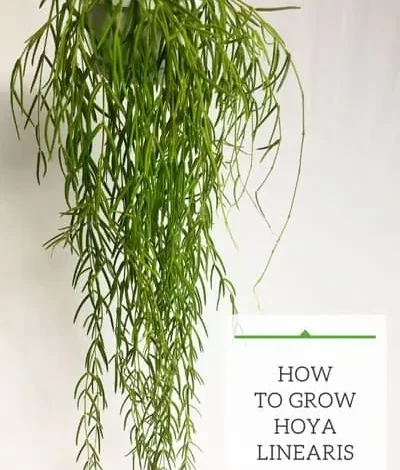
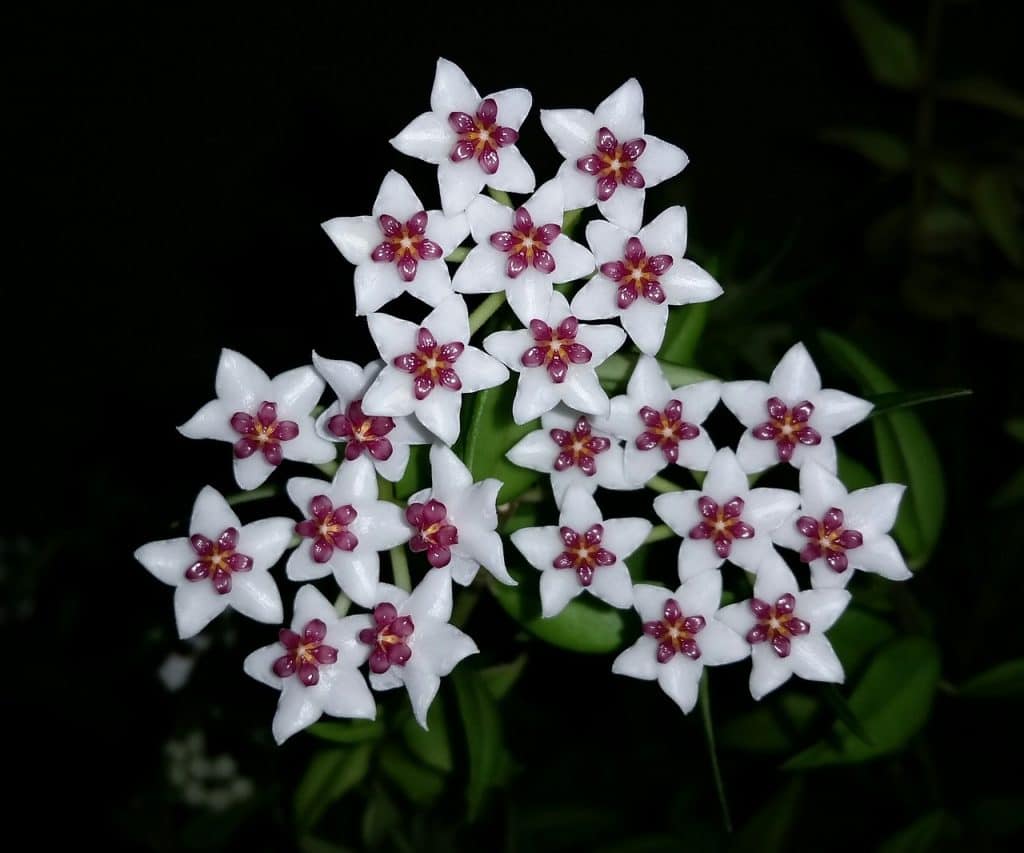 Commonly known as Hoya, Hoya linearis is a plant from the Apocynaceae family that was born in Southeast Asia and is well suited to a placid indoor life.
Commonly known as Hoya, Hoya linearis is a plant from the Apocynaceae family that was born in Southeast Asia and is well suited to a placid indoor life.
There are varieties that grow in natural environments in countries such as Nepal, Burma, China and India.
Its name is due to the British gardener Thomas Hoya, who took care of tropical plants that brightened up the royal gardens of the Duke of England.
Did you know…It blooms in the spring, but you will not create this: the flower produces long stems capable of stretching up to six meters, which are completely covered with the unique leaves that grow in curvature and that at the beginning of the plant’s life are somewhat whitish to then turn greenish gray.
These cluster-like spring inflorescences support many small, hanging flowers.
Blooming Hoya linearis, another beautiful variety that you can garnish at home, gives off a nice vanilla flavor.
Its stems have a tendency to grow with a curious spiral that draws a lot of attention.
You should never prune a Hoya linearis, because it blooms only at the ends of the branches. Unless they are dry, not cutting their stems is never the right thing to do.
Temperature: Where to plant the Hoya Linearis?
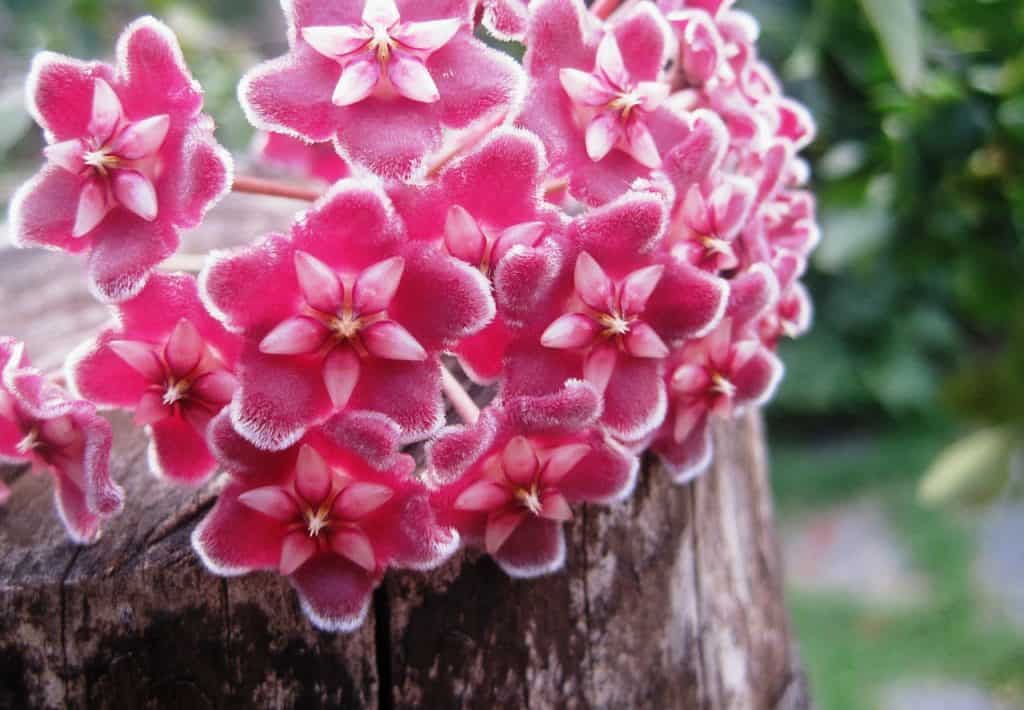 The minimum it tolerates is 10 degrees. If you grow this plant in a stable environment of around 19°C or a little more, the Hoya will be forever grateful.
The minimum it tolerates is 10 degrees. If you grow this plant in a stable environment of around 19°C or a little more, the Hoya will be forever grateful.
In summer, she will feel comfortable with more than 24°C. But if the air is hot and dry, the leaves will begin to twist. She won’t like it very much. So the room should be well ventilated in order to provide a better environmental condition.
For its part, winter is the period of rest. La Hoya is going on vacation, but you must be aware that the interior temperature remains at 15°C, so that its root system is not disturbed.
Light: What needs do you have?
Some direct sun doesn’t hurt. Look for a room in your house that is very well lit.
It can be a window or a balcony, where you can suspend it with the help of a hanging pot. Take into account that its root system does not grow deep, it is rather expansive and somewhat weak.
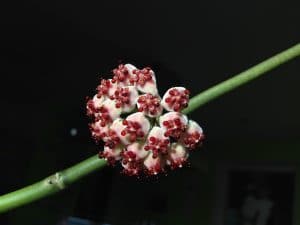 But it must be clarified that the most convenient are mostly diffuse solar exposures. It’s the most convenient thing for her really.
But it must be clarified that the most convenient are mostly diffuse solar exposures. It’s the most convenient thing for her really.
Without bright natural light, its fragrant flowers will be scarce in the spring.
The quality of flowering will depend on the light factor. Don’t neglect it.
Substrate and Fertilizer: How do we prepare the land?
Its requirement at ground level is that it always has good drainage. A universal substrate, mixed with perlite with peat or sand, will help a lot to keep the water well.
In homemade preparations, take one part of sand, two of lawn or garden soil and humus, as well as three parts of leaf soil. This will give you a lot of nutritional stability.
When it comes to flowering time, the Hoya needs to be helped by a mineral fertilizer that is applied in the irrigation every 2 to 3 weeks.
Irrigation: how often and how?
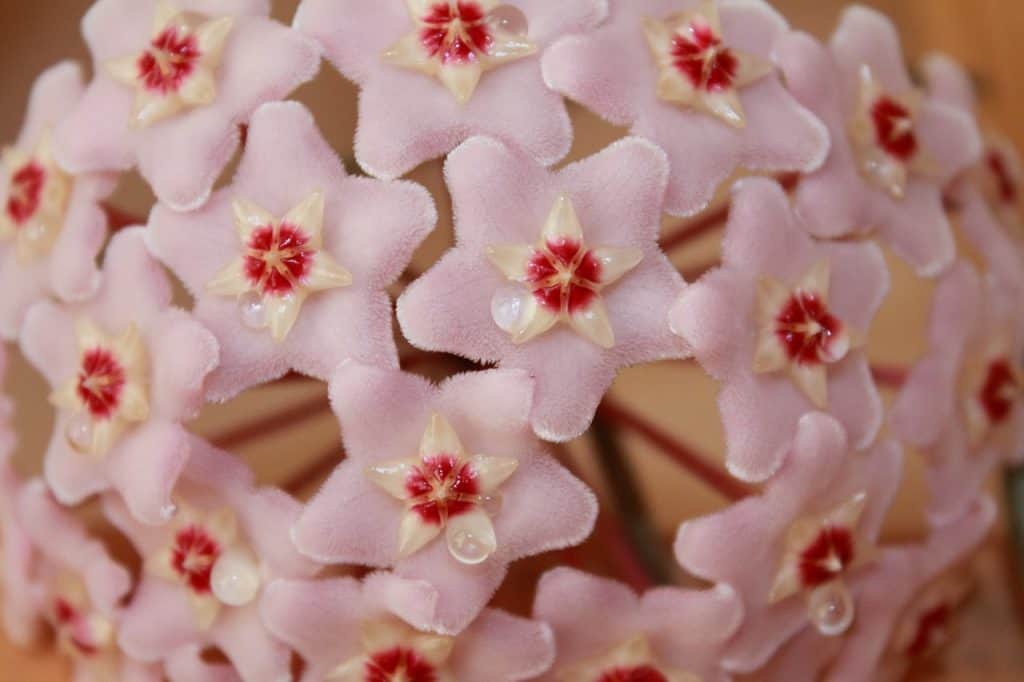 In times of plant growth, irrigation must be very moderate, always taking care that the upper layer has dried before spraying with water again. That is a rule that you must always abide by.
In times of plant growth, irrigation must be very moderate, always taking care that the upper layer has dried before spraying with water again. That is a rule that you must always abide by.
Avoid flooding at all costs.
The stagnation of the water takes the life out of the Hoya. It will die if you do not control this factor well. Spray the root ball so it doesn’t dry out completely. That’s also not favorable to its fleshy, curved leaves.
And since it really likes moisture, you can spray it with warm water twice a week.
The winter will have a good time watering it once every two weeks. And in the summer, do it only once.
It will be very nice that you can take advantage of its long stems as true vegetable curtains. Arrange several hanging baskets in a row and beautiful green cascades will brighten up the room where this fabulous low-maintenance plant will grow.

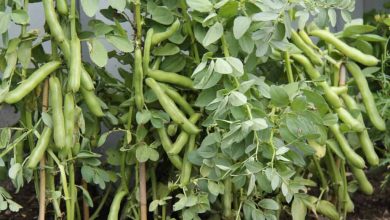
![Photo of Polygala Myrtifolia: [Cultivation, Irrigation, Associations, Pests and Diseases]](https://www.complete-gardening.com/wp-content/uploads/2022/08/polygala-myrtifolia-cultivation-irrigation-associations-pests-and-diseases-390x220.jpg)
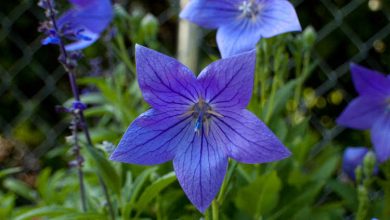
![Photo of Prune Ficus Benjamina: [Importance, Time, Tools, Considerations and Steps]](https://www.complete-gardening.com/wp-content/uploads/2022/08/prune-ficus-benjamina-importance-time-tools-considerations-and-steps-390x220.jpg)